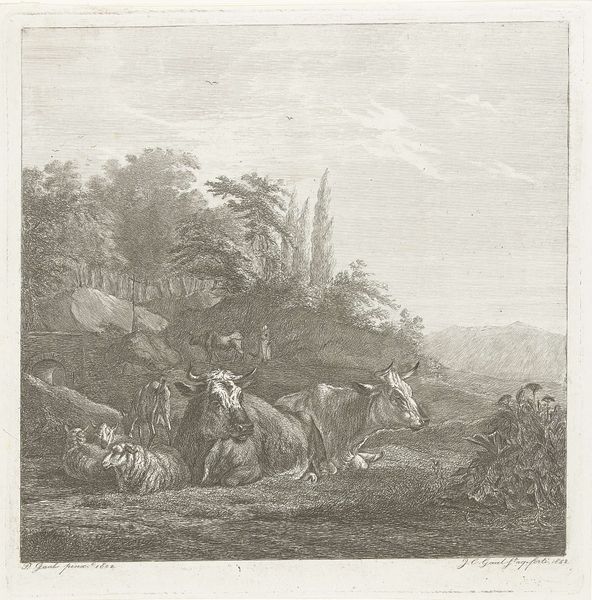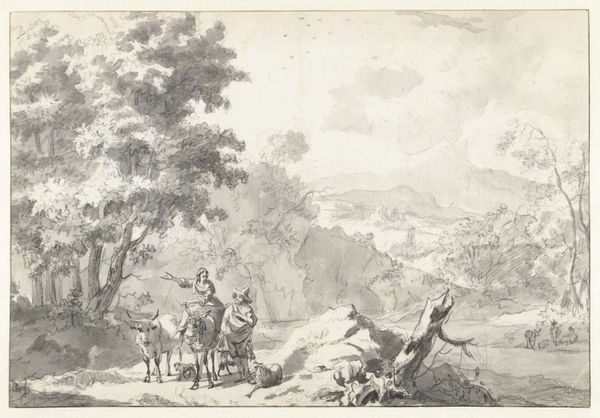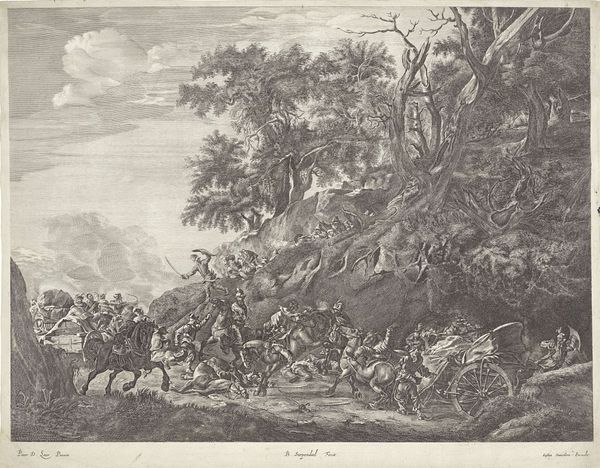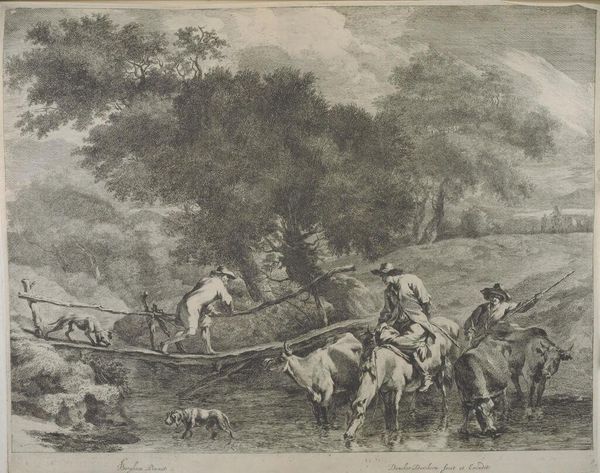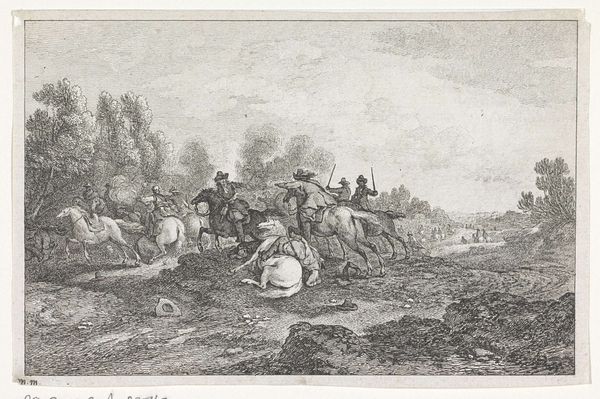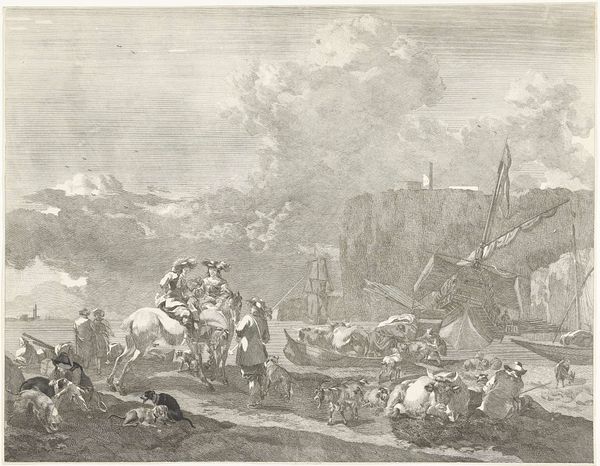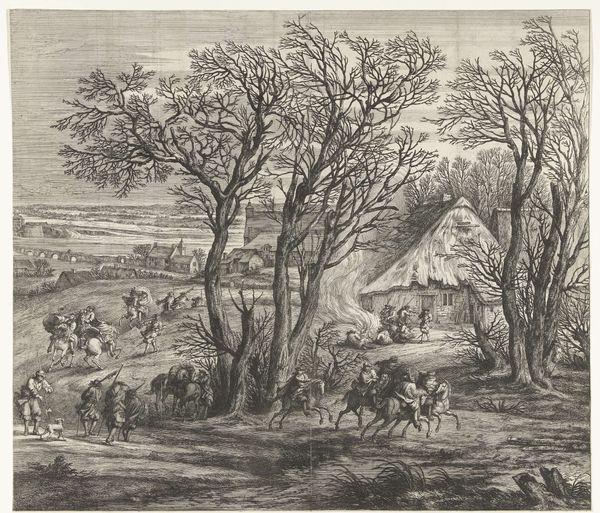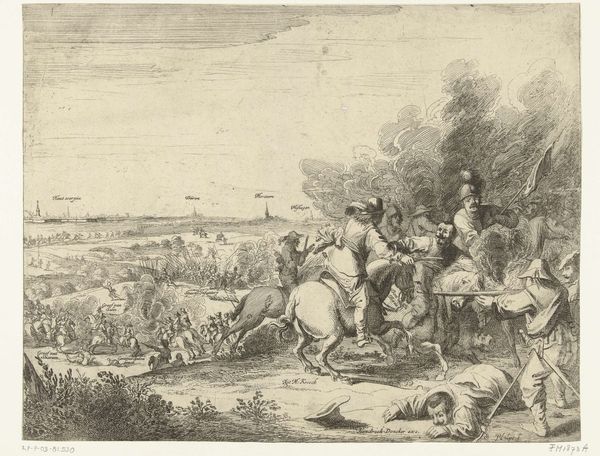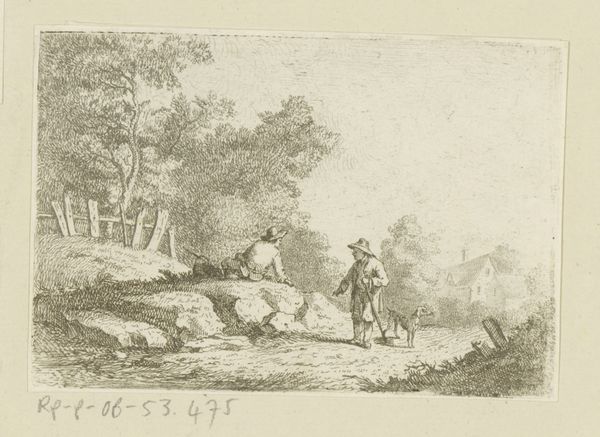
drawing, pencil
#
portrait
#
drawing
#
pencil sketch
#
landscape
#
figuration
#
pencil
#
pencil work
#
genre-painting
#
academic-art
#
realism
Dimensions: height 210 mm, width 267 mm
Copyright: Rijks Museum: Open Domain
Editor: So, here we have Gerard Bilders’s “Herderin met geiten en schapen in bergachtig landschap,” made sometime between 1848 and 1865. It's a pencil drawing, very delicate. It almost feels like a snapshot of a simpler, rural life. What do you see in this piece? Curator: As a materialist, I’m immediately drawn to the conditions of its production. This isn't just a pretty picture; it’s the residue of labour. Consider the graphite itself, mined and processed, then applied to paper likely produced through its own industrial process. What kind of pencils did Bilders use? The variations in darkness suggest he was thinking very carefully about their material properties, right? Editor: Absolutely, there’s a lot of variation in tone. It does feel like he was experimenting with how much the pencil could do. The shading is so subtle. Curator: Exactly. And who was the intended consumer? Was this a study for a larger painting? Was it sold to bourgeois audiences nostalgic for rural life but disconnected from its realities? We can't ignore the social context. These images often served to idealize and therefore obscure the very real, often harsh, conditions of agricultural labor. Think about the ownership, commodification, and consumption here. Editor: So you’re saying even a seemingly simple landscape drawing can be loaded with commentary on class and industry? Curator: Precisely. Even the tools and techniques themselves tell a story about material culture and the artist’s place within that culture. What does it mean to use a pencil – a mass produced object – to depict this idealized landscape? What are the implications of portraying this type of pastoral work using readily available materials? Editor: That’s a really interesting point. I hadn’t considered the materials in relation to the subject matter like that before. Now I’m thinking about all the layers of production embedded in this image. Thanks!
Comments
No comments
Be the first to comment and join the conversation on the ultimate creative platform.

